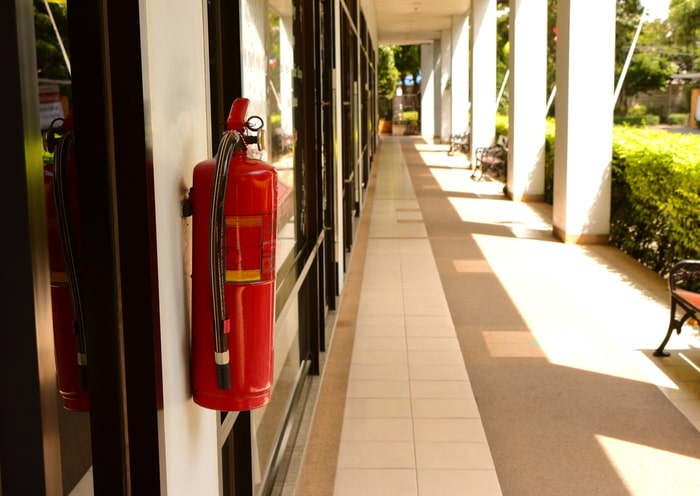
- January 16, 2024
- |security guard company
- | 0
Fire Watch Strategies –
The effectiveness of fire watch strategies hinges not only on human vigilance but also on the ability to adapt to environmental factors that can influence fire risks. At XPressGuards, a nationwide fire watch security guard company, we recognize the impact of environmental conditions on fire safety. In this article, we explore the influence of environmental factors on fire watch strategies and how XPressGuards adapts its approach to ensure robust fire prevention measures.
Identifying Key Environmental Factors
Environmental factors encompass a range of conditions that can either exacerbate or mitigate fire risks. Understanding these factors is crucial for designing fire watch strategies that address specific challenges in different settings. Key environmental factors include:
1. Weather Conditions
– Extreme temperatures, high winds, and drought conditions can contribute to the rapid spread of fires. Changes in weather patterns influence fire behavior, requiring adaptive strategies to address varying conditions.
2. Topography
– The physical features of the landscape, such as hills, valleys, and vegetation density, impact the rate and direction of fire spread. Topographical considerations play a role in determining optimal patrol routes and fire prevention measures.
3. Vegetation and Fuel Load
– The type and abundance of vegetation in an area contribute to its fuel load, influencing fire behavior. Areas with dense vegetation may require heightened vigilance and additional preventive measures.
4. Proximity to Water Sources
– The availability of water sources, such as rivers, lakes, or reservoirs, can influence firefighting capabilities. Strategic placement of fire watch services near water sources enhances the ability to respond quickly to emerging fire threats.
Adapting Fire Watch Strategies to Environmental Challenges
1. Weather-Responsive Patrols
– XPressGuards implements weather-responsive patrols, adjusting the frequency and intensity of patrols based on prevailing weather conditions. During periods of high fire risk, such as hot and windy days, patrols are intensified to enhance early detection and response.
2. Topographical Analysis
– Conducting a thorough topographical analysis is integral to our fire watch strategies. Understanding the natural features of the environment allows us to identify potential fire corridors and strategically position security personnel to optimize fire prevention efforts.
3. Vegetation Management Plans
– In areas with significant vegetation, XPressGuards develops vegetation management plans to reduce fuel loads and minimize fire risks. This may include regular clearing of dry vegetation, creating firebreaks, and implementing controlled burns under controlled conditions.
4. Strategic Placement of Security Personnel
– XPressGuards strategically places security personnel based on environmental considerations. This may involve positioning guards on elevated vantage points to monitor larger areas, especially in regions with challenging topography or dense vegetation.
5. Water Source Utilization
– Proximity to water sources is leveraged in our fire watch strategies. Guards are trained to assess the availability of water sources and coordinate with local firefighting authorities for rapid response in case of fire incidents.
6. Technology Integration
– XPressGuards integrates advanced technologies into our fire watch strategies to enhance environmental monitoring. This includes the use of weather sensors, surveillance cameras, and other technological tools to provide real-time data for more informed decision-making.
Continuous Adaptation and Training
The dynamic nature of environmental conditions necessitates continuous adaptation in fire watch strategies. XPressGuards emphasizes ongoing training for security personnel to stay abreast of changing environmental factors and refine their response strategies accordingly. Regular updates on weather patterns, topographical changes, and vegetation conditions inform our proactive approach to fire prevention.
Environmental factors play a pivotal role in shaping effective fire watch strategies. XPressGuards recognizes the significance of adapting to nature’s challenges and employs a tailored approach that considers weather conditions, topography, vegetation, and water sources.
By continually assessing and adapting our strategies, we ensure that our fire watch services are not only vigilant but also responsive to the dynamic interplay between human efforts and environmental influences. Choosing XPressGuards means choosing a fire watch security partner that is prepared to navigate and mitigate the unique challenges posed by diverse environmental conditions. Contact us to learn more.


